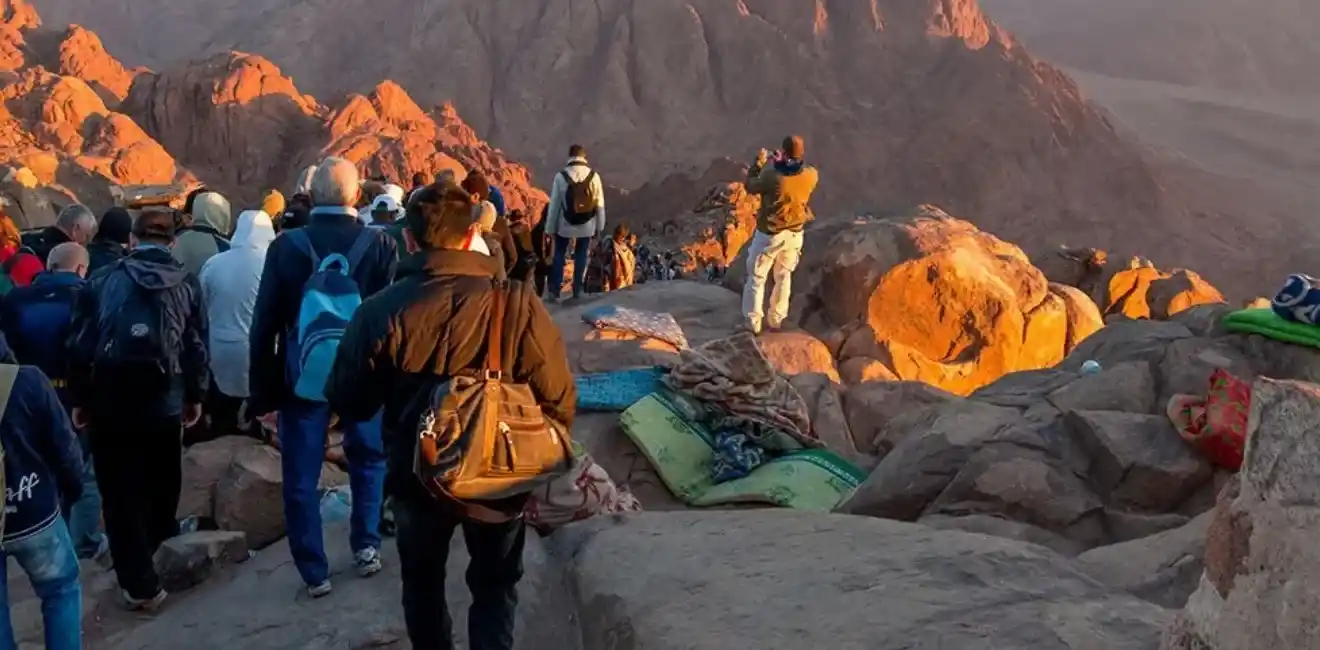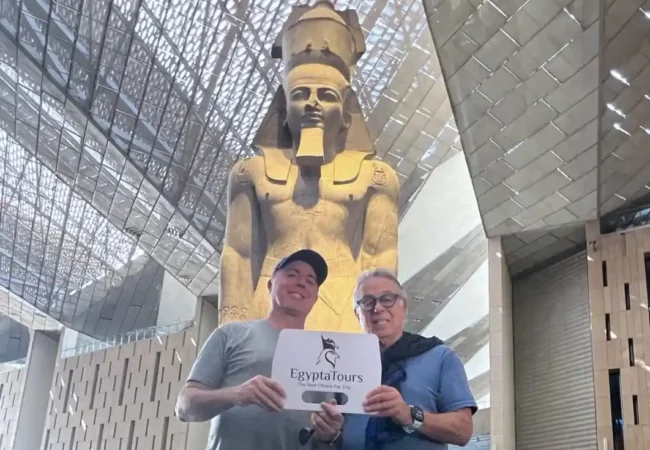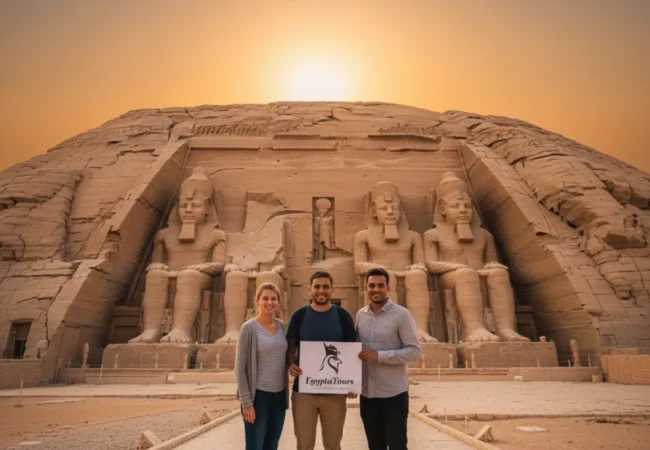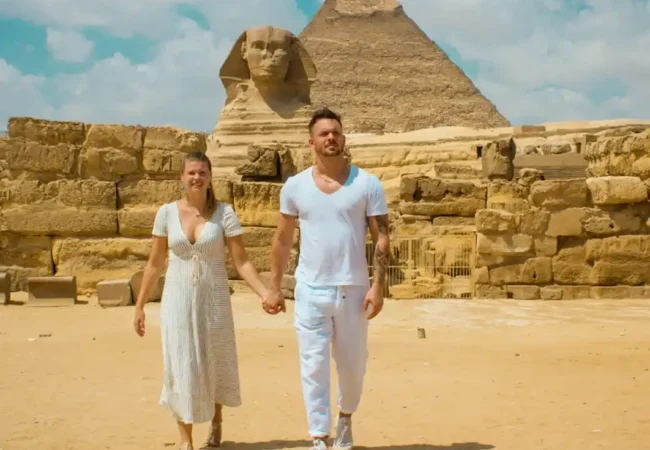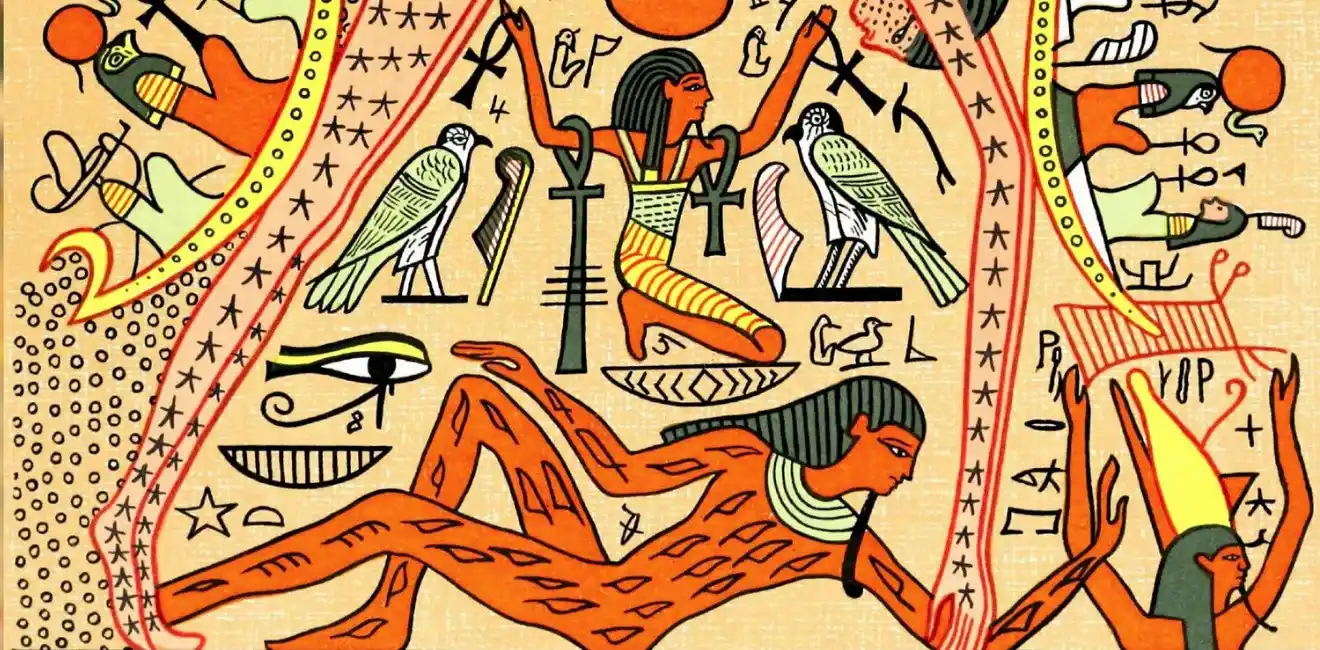
The ancient Egyptians were preoccupied with the human condition and fate after death
The ancient Egyptians were preoccupied with the human condition and fate after death as a new phase of immortality began.
This belief in the existence of an afterlife led them to take a great interest in the fate of man after death.
They mummified bodies to protect them from decomposition and were careful to bury their dead in strong impenetrable graves.
They placed next to the deceased everything they might need in their second life, including food drink, and tools for use after resurrection.
This belief in immortality was not just a belief it was the foundation of ancient Egyptian religion which stemmed from their belief in resurrection immortality, and the existence of a second life after death.
The ancient Egyptians were preoccupied with the human condition and fate after death
They not only departed but also faced rigorous accounting for their actions in life.
It was believed that the soul would stand before 42 judges led by Osiris known as the god of the dead. There, the deceased begins to explain his actions, remembering good and disavowing evil.
His heart is weighed on a real scale.
On one side is a feather representing Maat, the symbol of truth and justice. This indicates his righteousness.
If the heart tips the scales it indicates his disobedience, and his fate is to be devoured by a ferocious animal standing in the courtyard awaiting sinners.
This belief demonstrates how the ancient Egyptians were preoccupied with the human condition and fate after death.
The ancient Egyptians not only believed in polytheism, but the ancient Egyptian religion underwent a major transformation under King Amenhotep IV who changed his name to Akhenaten.
This king called for the worship of only one god Aten, whose symbol was the sun disc which radiated its light to give life to all things.
Akhenaten did not stop at this call alone he founded a new city Akhetaten known today as Tell el-Amarna. He built temples open to the sky there expressing a new ideology in ancient Egyptian religion based on the idea of monotheism and the worship of a single god who bestows light and existence.
In ancient Egyptian religion the gods were treated as living beings who loved, became angry, and needed to be appeased.
Hence the role of “offerings,” symbolic gifts offered by humans to strengthen their relationship with their deities.
The Egyptians knew this custom since ancient times, and it continued as an essential part of their faith.
They believed that offering a sacrifice appeased the gods and granted humans contentment in this world and a better fate after death.
These rituals became closely linked to what the ancient Egyptians believed about human destiny after death as everything was connected to what awaited the soul in the afterlife.
Polytheism in Ancient Egypt
The ancient Egyptians were preoccupied with the human condition and fate after death Ancient Egyptian religion was not a single unified religion, but rather a diverse religious system comprising the official religion adopted by the state and popular beliefs held by individuals.
The Egyptians did not have a sacred religious book as we know it today.
Instead they used symbols and inscriptions written in hieroglyphics which is considered sacred writing.
Worship not belief was the primary focus. They revered the gods because they believed they owned the earth and controlled the fate of the people.
In the eyes of the ancient Egyptians the gods were closer to humans exchanging feelings and gifts. Therefore people made sacrifices as a means of getting closer to them.
This perception was neither strange nor new rather, it was linked to an ancient well-known idea from the story of Adam’s sons Cain and Abel when each offered a sacrifice.
For the Egyptians sacrifice was not merely a ritual, but a means of appeasing the gods.
This reflected a strong spiritual relationship between man and his deity. Here the features of ancient Egyptian religion emerge where the concept of practical worship prevailed over theoretical faith.
Ancient Egyptian religion was linked to nature, and the ancient Egyptians were preoccupied with the state of man and his fate after death.
There were deities representing the sky the earth the sun, and the moon.
The sky was feminine and was given names such as “Nut” or “Hathor,” while the earth was masculine and was called “Geb.”
The sun also changed its name depending on its position : “Khepri” at sunrise, “Ra” at noon, and “Atum” at sunset.
The god Horus was united with Ra in a single form called “Ra-Hor-Akhty.”
The moon had multiple incarnations such as the god Thoth or Khonsu and sometimes in the form of an ibis or a monkey.
Amun was considered one of the most powerful gods of ancient Egyptian religion. His name means “the hidden one.” He sometimes appeared as a man wearing two feathers on his head, and other times as a ram.
Mummification in Ancient Egypt
After we learned that the ancient Egyptians were preoccupied with the human condition and fate after death during the predynastic and early archaic periods graves were merely primitive pits in the ground with no depth or structure.
The body was buried in them in a squatting position or as if in a fetus with the head facing south and the face facing west. Because the sand was directly in contact with the body bodily fluids began to seep out quickly drying the skin and organs without any tools.
This phenomenon was the beginning that led the Egyptians to discover the concept of mummification in ancient Egyptian religion as nature itself began to provide them with the first lesson in preserving the body.
But the Egyptians didn’t stop at what the sand had done. They took advantage of the experience and developed it themselves.
With the beginning of the First Dynasty they began using linen soaked in resin to wrap the body attempting to replicate what nature had done with their own hands.
The technique wasn’t perfect but it was the cornerstone of an entirely new way of dealing with the dead.
This transformation marked the starting point for a long history of development in mummification methods in ancient Egyptian religion where preserving the body from decay became a matter of belief in the return of the soul.
Ancient Egyptian Beliefs About the Court of the Dead
In mummification in ancient Egyptian religion the goal was not merely to preserve the body, but to prepare the deceased for a decisive trial before 42 judges who symbolized the values of justice and order.
Osiris stood on the throne The deeds of the deceased were weighed against the feather of Maat the goddess of truth. If their heart was light, they were saved, and if it was burdened with their sins they were devoured by the monster “Ammamut.”
Mummification in ancient Egyptian religion was an integral part of preparing for life after death.
The Lake of Fire in the Afterlife
The ancient Egyptians were preoccupied with the human condition and fate after death where a difficult journey began in a mysterious world called the Duat passing through places filled with trials.
One of the most dangerous of these places was the “Lake of Fire” in ancient Egyptian religion.
This area separated land and water and appeared red symbolizing fire and burning.
However it was not only a place of torment; it was also used as a means of purifying pure souls from all their earthly impurities while evil souls were thrown into it to receive punishment.
It was believed that a terrifying guardian of this lake was “Ammuut,” a creature with the body of a hybrid of a crocodile, a lion, and a hippopotamus. The “Lake of Fire” in ancient Egyptian religion is mentioned in the texts of the Book of Coming Out into the Day where the soul asks the Guardians of Light to purify it of falsehood and evil.
The Fields of Ayarra
The ancient Egyptians were deeply preoccupied with the human condition and fate after death.
They believed that the soul faced a major test after death.
If the deceased successfully passed the famous “Maat” test which measured the purity of heart and justice they were transported to the Fields of Ayarra in ancient Egyptian religion a paradise representing a life free of pain and hardship with flowing rivers and fruitful trees.
According to Egyptian beliefs the Ayaro fields were considered a paradise in ancient Egyptian religion enjoyed by the pious after death. This idea is clearly depicted in the Papyrus of Ani dating back to the Middle Kingdom.
Ani is depicted offering sacrifices to the gods then sailing in a small boat to meet Horus. He then plants and harvests wheat, a sign of eternal life and fertility.
The god Ani plows the land symbolizing fruitful work in the afterlife.
The papyrus ends with an image of two boats carrying steps leading up to the kingdom of Osiris, the symbol of eternal life.
This reflects the Egyptians’ deep belief that the pure soul would receive an honorable fate after death.
The ancient Egyptians were also preoccupied with the state of man and his fate after death believing that this fate was determined by the deeds performed during his lifetime.
FAQs
What did the ancient Egyptians do with the human body after death?
They removed everything from the body during mummification.
Why were the Egyptians obsessed with death?
Because they believed in life after death.
In conclusion, we have learned why the ancient Egyptians were preoccupied with the human condition and fate after death.
The beliefs and rituals they followed reflected their desire to ensure a pure and secure eternal life.
Through the experience of “Maat” and concepts such as the “Iaro Fields,” the Egyptians worked to immortalize the memory of the deceased and ensure the continuity of the soul in an afterlife filled with peace and prosperity.
This profound belief in resurrection and immortality remained a fundamental part of their culture, and this belief demonstrates how the human soul was a central focus of their view of death and life after death. We hope you like this article.

